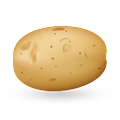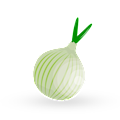These stuffed dumplings derived their name from the Polish word for filled dumpling: pieróg. This former peasant food evolved into one of Poland's favorite dishes. Every family has their own version of pierogi filling, and the ingredients that can be used are limited only by the imagination of the chef.
Pierogi can be sweet, savory, or spicy, and the most common fillings include cheese, onions, ground meat, mushrooms, potatoes, and sauerkraut. The sweet versions commonly include various berries, such as strawberries or blueberries. Traditionally, these dumplings are served as the 12th course of a traditional Polish Christmas Eve dinner.
VARIATIONS OF Pierogi
Sernik is a cheesecake from Poland, stemming from old Christian and Jewish traditions. It is made with eggs, sugar, and twaróg - a type of curd cheese that has been used in desserts for hundreds of years. It is believed that sernik originated in the 17th century, when King Jan III Sobieski brought the recipe with him after his victory against the Turks at the Battle of Vienna.
Today, there are many varieties of sernik, some baked, some unbaked, but it is usually made on a layer of crumbly cake. Often times raisins, chocolate sauce, or fruits are also added to sernik, and one of the most popular varieties of the dessert has a sponge cake as its base and is covered with jelly and fruit on top.
Rogal świętomarciński, also known as St. Martin's croissant or St. Martin's roll, is a filled croissant in a coating of icing with chopped nuts sprinkled over it. It gets its name from the traditional baking and eating of the rolls on Saint Martin's Day for 150 years up to this day in the city of Poznań and some districts in the Wielkopolskie Voivodship in Poland.
According to a traditional tale, the croissants date back to the days of the 1683 siege of Vienna when king Jan Sobieski and Poland's hussars defeated the Turks in a battle and bakers started to make the croissants to keep the victory in public memory, while the Turkish crescent contributed to the shape of the final product.
MAIN INGREDIENTS
Comforting rosół is a traditional meat soup. Even though the chicken version, called rosół z kury, is the most famous variety–beef, veal, turkey, or mixed meat broths are also quite frequently prepared throughout the country.
Pork should never be used since it results in an opaque broth. Rosół is usually made with meat that is left on the bone, which contributes to the overall taste. The meat is cooked in cold water with a variety of vegetables such as carrots, celery, and mushrooms.
VARIATIONS OF Rosół
The dough for these famous Polish potato meat dumplings is made with mashed or grated raw potatoes – or occasionally a combination of both – mixed with flour, salt, and eggs in order to create a pliable and soft batter for the dish.
Even though they can be eaten plain, pyzy are usually made with a delectable stuffing hidden inside the dough. The most common choice of filling is minced meat, usually a mix of pork and beef, which is frequently enriched with onions, sautéed mushrooms, or traditional Polish cottage cheese.
The stuffing is placed inside the dough, and the package is then rolled into a small round ball and boiled.
A classic Poznań specialty, pyry z gzikiem is a simple potato and cheese dish. It consists of boiled or baked potatoes accompanied by a mixture of cottage cheese, cream, and onions. The potatoes are served whole or cut in half, typically in their jackets, with the cottage cheese dip either on top or on the side.
Finely chopped chives can be added to the cheese filling or used as a garnish, while the cream can be replaced with milk, kefir, or buttermilk. The gzik mixture is usually flavored with dill and cumin, and it can also be served with crackers or sandwiches.
MAIN INGREDIENTS
The name golonka refers to the pork hock, or pork knuckle, which is usually seared and slowly cooked until tender. Alternatively, it can also be grilled or braised in the oven. The dish comes in many regional varities, which may include fresh or smoked golonka, with the former being a more traditional choice.
It is usually served whole, on the bone, alongside boiled potatoes, cabbage, a variety of cooked vegetables, and horseradish or mustard sauce. This traditional dish is often compared to a similar delicacy eaten in Germany, known as Eisbain or Schweinshaxe.













